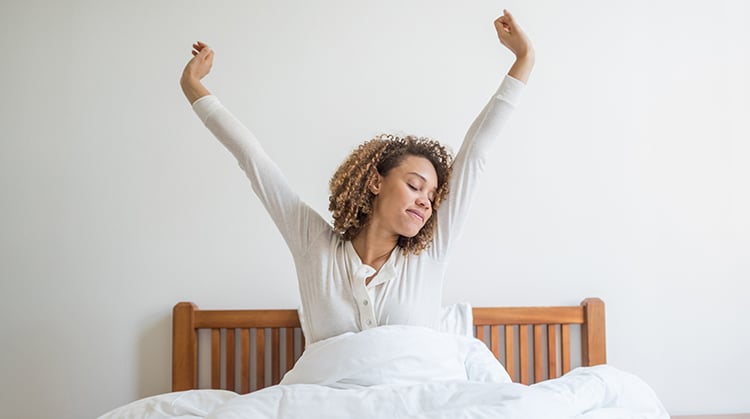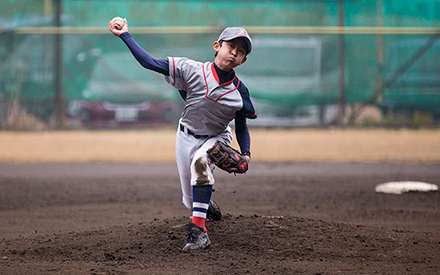
Sleep is an essential part of our well-being and plays an important role in healing, muscle recovery, and memory. Adults should get seven or more hours of sleep a night. School-aged children and teenagers need eight to 11 hours. Regardless of age, everyone should get a minimum of seven or more hours of sleep each night.
Managing your sleep is key to your overall health. Not getting enough sleep can be a problem and can contribute to the development of chronic pain. It also may worsen anxiety or depression symptoms. So, what should you do if you are not getting enough sleep?
Sleep can be altered for several reasons, but there are many things that you can control when it comes to sleep. Risk factors for short sleep spans include obesity, physical inactivity, daily smoking, and too much alcohol use. If you have difficulty getting comfortable at night, a physical therapist can help you with positioning.
After an evaluation, physical therapists create treatment plans for a patient's specific needs and goals.
Good sleep hygiene, the practice of healthy behaviors you can do to affect your sleep routine, is a great place to start. Healthy sleep requires your effort throughout the day, as well as before bedtime.
Try these sleep hygiene tips to improve the quality of your sleep.
During the day
1. Do more physical activity.
Staying active helps in getting restful sleep. Once cleared by a health care provider, try to get 150 minutes of moderate exercise each week. A physical therapist can help you find the right exercises for your needs and abilities.
2. Increase your exposure to light.
The lack of Vitamin D is linked to a higher risk of sleep disorders. Consider increasing your exposure to light during the day.
3. Avoid long napping.
As an adult, if you take naps, keep them to 20 minutes or less.
4. Don’t smoke.
If you are a smoker, stop smoking two to three hours before going to sleep.
5. Limit alcohol.
If you drink alcohol, do so sparingly.
6. Avoid caffeine after midday.
Caffeine is a stimulant that can make you more alert and limit restfulness. It is also a diuretic that can increase your need to urinate at night.
Before bed
7. Get enough sleep.
Set a bedtime that will allow seven or more hours of sleep.
8. Keep a sleep schedule.
Wake up and go to bed at the same time every day.
9. Set the temperature.
According to the National Sleep Foundation, somewhere around 65 degrees makes for the best sleep. Assure that the temperature is right for you, and you have the necessary blankets and pillows for your comfort.
10. Create a relaxing bedtime routine.
This may include dimming the lights, avoiding the use of technology, and reducing noises. Using meditation or soft relaxing sounds can help prepare you for sleep.
Keep in mind some medications may change how well you sleep. Talk to your doctor or pharmacist about timing your medications to promote a balance of sleep and wakefulness.
If sleep remains difficult, keep a sleep diary to learn more about your sleep patterns and discuss it with your physical therapist. A PT also can help you if you experience pain or discomfort that limits your movements or disturbs your sleep. Learning the right exercises and positions may be helpful for you.
Physical therapists are movement experts. They improve quality of life through hands-on care, patient education, and prescribed movement. You can contact a physical therapist directly for an evaluation. To locate a physical therapist in your area, visit Find a PT.
Additional Resources:
Bibliography
Dean E, Skinner M, Myezwa H, et al. Health competency standards in physical therapist practice. Phys Ther. 2019;99(9):1242–1254. Article Summary in PubMed.
Vega R, Miro J, Esteve R, Ramirez-Maestre C, Lopez-Martinez AE, Jensen MP. Sleep disturbance in individuals with physical disabilities and chronic pain: the role of physical, emotional, and cognitive factors. Disabil Health J. 2019;12(4):588–593. Article Summary in PubMed.
Vega R, Racine M, Castarlenas E, et al. The role of sleep quality and fatigue on the benefits of an interdisciplinary treatment for adults with chronic pain. Pain Pract. 2019;19(4):354–362. Article Summary in PubMed.
Gao Q, Kou T, Zhuang B, Ren Y, Dong X, Wang Q. The Association between Vitamin D deficiency and sleep disorders: a systematic review and meta-analysis. Nutrients. 2018;10(10):1395. Article Summary in PubMed.
Siengsukon CF, Miller KL. Sleep management in the home. https://www.homehealthsection.org/assets/docs/Sleep_Kit_3-2018.pdf. Published March 2018. Accessed March 2, 2020.
Ohayon M, Wickwire EM, Hirshkowitz M, et al. National Sleep Foundation’s sleep quality recommendations: first report. Sleep Health. 2017;3(1):6–19. Article Summary in PubMed.
Siengsukon CF, Al-dughmi M, Stevens S. Sleep health promotion: practical information for physical therapists. Phys Ther. 2017;97(8):826–836. Article Summary in PubMed.
Hirshkowitz M, Whiton K, Albert SM, et al. National Sleep Foundation’s sleep time duration recommendations: methodology and results summary. Sleep Health. 2015;1(1)40–43. Article Summary in PubMed.
Irish LA, Kline CE, Gunn HE, Buysse DJ, Hall MH. The role of sleep hygiene in promoting public health: a review of empirical evidence. Sleep Med Rev. 2015;22:23–36. Article Summary in PubMed.
Kothari DJ, Davis MC, Yeung EW, Tennen HA. Positive affect and pain: mediators of the within-day relation linking sleep quality to activity interference in fibromyalgia. Pain. 2015;156(3):540–546. Article Summary in PubMed.
Finan PH, Goodin BR, Smith MT. The association of sleep and pain: an update and a path forward. J Pain. 2013;14(12):1539–1552. Article Summary in PubMed.


